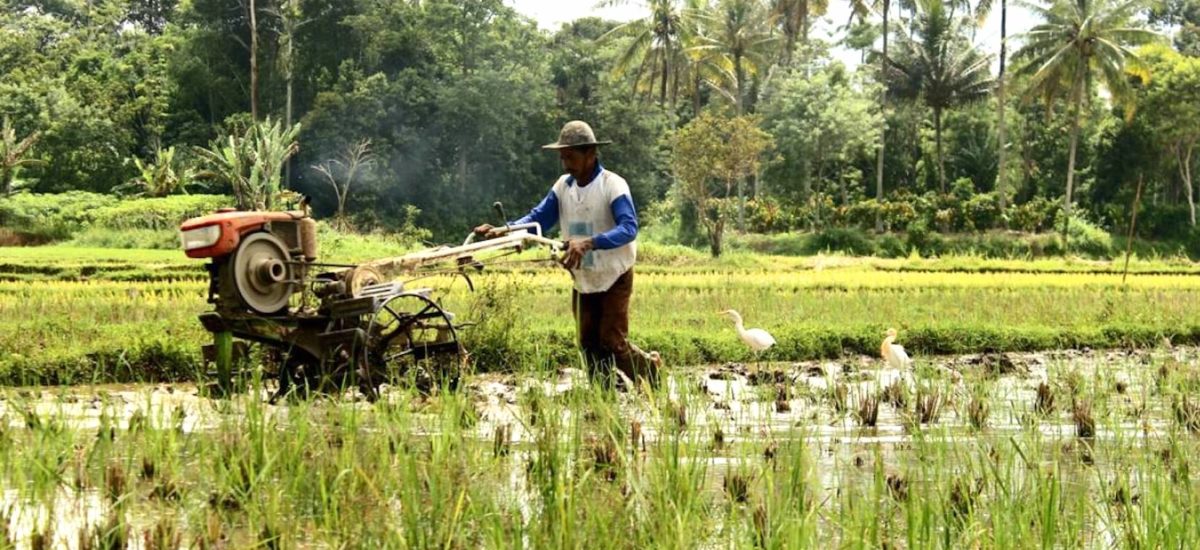Photo courtesy of The Free Press Journal
Much of the country is gripped by drought because the past month was exceptionally dry following the very wet conditions previously. The hydroelectric reservoirs have little water and the government is importing fossil fuels to drive power stations when there is no foreign exchange while the greater tragedy, namely the lost Maha harvest, is out of the news.
In much of the paddy growing regions of the country, irrigation for cultivation has not been an issue, and there is all the required water in irrigation tanks and reservoirs to meet the needs of the paddy farmers. The Maha season, which utilizes rain water for the first half of the cultivation, has the highest paddy output of the two seasons.
It is therefore doubly tragic that the worst of the input shortage of fertilizer hit this season of paddy cultivation, and once import restrictions were lifted and fertilizer became available, although at a price, it was too late. Fertilizer is needed in the first half of the cultivation cycle, not the second half, where if farmers unknowingly try to compensate for a shortage in the first half, it could detrimentally affect the yield.
While in my region farmers have an obvious drop in expected harvest because many of whom delayed their cultivation until a resolution in the fertilizer crisis was reached, there are exceptions. The latter are small plots, well cared for using new techniques such as parachute sowing and old varieties that require less chemical fertilizer. Organic cultivation stories are a red herring to the overall discussion of whether there is an adequate harvest to meet the national food requirement. Decision makers continue to use examples of this kind that amount to no more than a hill of beans to continue to push the agenda of organic agriculture on a nation that is fed on hybrid paddy, begat of the green revolution.
The national paddy crop that is currently being harvested, depending on the area of the country, will continue until mid-April, and is likely to be short of over 1.5 million tons of paddy due primarily to a sudden shift in the government policy of banning the import of chemical fertilizer and other chemical inputs in the drive to convert the country to an organic agriculture state.
It is no secret that those farmers who had the resources purchased inputs at inflated prices in order not to lose money in the hope that the farmgate price for their paddy would reflect the resulting shortage.
In the middle of all this, there was a supposed gift of a million tons of Chinese rice by new year to save the nation from famine. Don’t lawmakers realize that the mere announcement of this will result in a stab in the back to the remaining farmers who borrowed and searched and purchased high priced inputs to satisfy a demand? The day after the announcement the farmgate price of a 64 kg bag of paddy fell by Rs 2,000, which is a Rs. 30 per kg reduction in the price of paddy offered to farmers who are already suffering a loss of yield.
To put it another way, using the 80:20 rule of farming where 80% of farmers produce 20% in volume of paddy, the majority simply planted paddy with the hope of getting sufficient yield to feed their families. They utilized the suspect fertilizer provided by the state to achieve this and can weather the storm as their costs were reduced accordingly. The 20% of professional farmers who have high overheads such as tractors and harvesters invested in buying inputs at black market rates from traders -who simply went underground – in order to achieve a reasonable yield in the hope of a higher price. It is this latter farmer, the efficient farmer, those who the country wishes to encourage and prosper for food security, who was sacrificed in the interests of political expediency of neutralizing the expected shortage with the free Chinese rice.
If the rice is edible to the Chinese, it should be edible to Sri Lankans. However, it is misguided to believe it has any less chemical inputs than regular Sri Lankan grown rice that is not organic.
I have four acres of paddy that despite the challenges, I decided to find the funds to maximize my yield, as I already possess a tractor and intended to plow my fields early and get ready for planting unlike my neighbor who delayed and sowed a month later. We have the same extent of land and the same soil conditions; he is more fortunate as he has better access to irrigation water, being at the end of the canal.
I would have spent four or five times what my neighbor spent on cultivation, and though I still have over a month before harvest, I am convinced my volume of harvest would be nearly three times my neighbor’s. He faced untimely rains which benefitted me but affected him adversely.
But although his yield is low, his costs are low so his net profit on the cultivation could be the same as mine. My profit would be the same as his although my harvest is likely to be 300% of his. Who is the bigger fool? It is the government’s announcement that Chinese rice is going to be distributed free that caused this change in profitability. If I do not to sell at the farmgate and have the storage capacity to keep the paddy for six months, I can increase my profit fivefold when the benefit of the free rice has worked its way through the system. That is only if I can keep it, which in a time of shortage is unconscionable.
Farmers are faced with complicated decisions where the subsistence farmer has less choices due to his precarious financial position and may require financial assistance to survive.
The proposed Rs. 40 billion subsidy to compensate farmers for their loss seems to be a wasteful way to spend money in this time of crisis, with no agreement yet on a fair distribution. Farmers who have borrowed and invested to gain a higher yield are unlikely to be compensated for their risk taking while those who did not take any risk are the ones to be compensated for the colossal mistake on the part of the state in implementing the no chemical policy.
All farmers who cultivated their land must be compensated on a fixed amount in proportion to the land that was sown, not on the profit or loss therefrom. No doubt this will be a bone of contention as the compensation policy will be political and not economic to incentivize the risk takers and investors in agriculture.
Once the dust settles, there will be winners and losers. A complete holistic look at paddy farming is the need of the hour to determine how new technology can be used to improve productivity. The majority of paddy farmers are not cut out to ensure food security due to their lack of resources to utilize their lands to the optimum. There is a severe labor shortage for farming and we must think of the future of paddy cultivation in encouraging professional farming to provide the bulk of the required paddy.
The waste of water is colossal. My neighbor, whose yield is less than a third of mine, uses more water per acre than I do. We must encourage large scale cultivation to be cost effective and change land ownership policies so that owners can never lose their lands, while renting to professional farmers on long term leases in order to efficiently and effectively cultivate the available arable land without further encroachment into forests.


